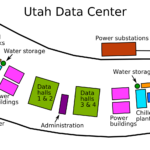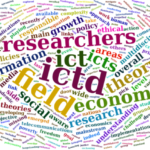Brief Concept Note Prepared for Ericsson
Background
The exponential growth of mobile technologies in the last 8 years surprised even the more optimistic observers. Today, close to 3.5 million people have access to a cell phone, a number that dwarfs the existing number of Internet users (about 1.2 billion), particularly in developing countries. Africa is actually the hottest region where such growth is occurring and where the ratio of cell phone users to Internet users is close to 10 to 1. A recent report recently completed by UNDP pinpoints that 4 billion people in the globe lack access to legal services and the justice sector in general, a number that is much larger than the so-called “digital divide”. This clearly suggest that on its own, the digital divide is not one of the top development priorities.
The Problem
Both developed and developing countries have committed to the achievement of the UN Millennium Development Goals (MDGs) by 2015. However, the latest forecasts on achieving this goals are grim. It now seems that many countries will not reach that goals, particularly those in Sub-Saharan Africa and the Least Developing Countries (LDCs).
Many of the MDGs are closely connected to the provision of public services to poor people either directly by governments (national, local) or through outsourcing to the private sector. Information and Communications Technologies (ICTs) can play an essential role not only in reaching marginal/under-served communities but also in scaling up the services at affordable costs, creating new markets and new demand for additional products and services. This however is still not happening on a substantive scale.
The Potential of the New MTs
By reducing the barriers to entry to new ICTs (language, cost, interface, etc.) mobile technologies provide fertile ground to explore the provision of basic government services (documentation such as birth certificates, education, health, etc.), of private services such as banking, micro-credit, etc, and the involvement of local communities in decision making processes (beyond elections).
To date, MTs are being successfully used to monitor human rights abuses, monitor the environment and provide some basic health information and services. But at the same time it seems clear that as the technology becomes more powerful and sophisticated other public and private services could be added. This in turn will not only get countries closer to the achievement of the MDGs but also develop new markets and new demand that today are still in their infancy.
But MTs also faces its own challenges. On the supply side, many cell phone providers are starting to hit market limitations particularly in areas where very poor populations inhabit and markets are either very small or inexistent. This might put a stop to the rapid growth of mobile cellphone user in the short run. On the demand side, MT users do not have access to the required applications that will allow them to get public and private services from their phones. By matching supply and demand new opportunities will emerge for both suppliers of MTs and end users and, in concert with national and local government generate win-win-win situations that will foster human development in the medium and long terms
The Way Forward
Developing country Government and their partners need to include in their current development and e-government strategies and priorities the delivery of public and private services through MTs. There is need for them to move beyond the so-called “digital divide” and instead focus on the real core social and economic issues and problems that can be addressed via ICTs and more specifically through MTs.
Furthermore, governments should also be aware that MTs empower citizens and stakeholders by enhancing access to information, fostering networking among them and opening the way for improving collective action within the context of good governance and democracy. MTs thus promote better dialog between civil society and the state. Finally, governments should be more pro-active in fostering innovative public-private partnerships that provide long-run sustainable solutions to traditional development problems.






Comments
One response to “Mobile Technologies (MTs) and Human Development: Harnessing the potential to tackle social exclusion”
Post Edited: Mobile Technologies (MTs) and Human Development: Harnessing the potential to tackle social exclusion https://t.co/2dBqffcx8J